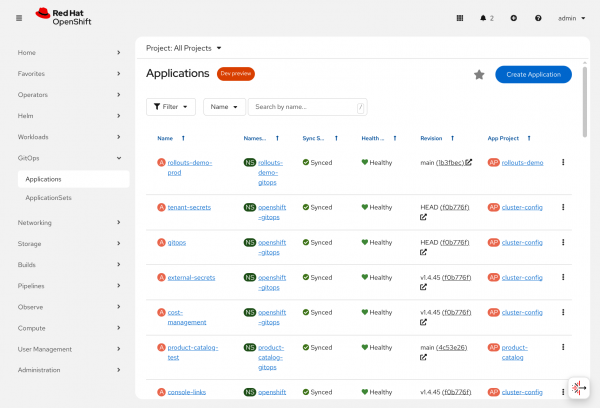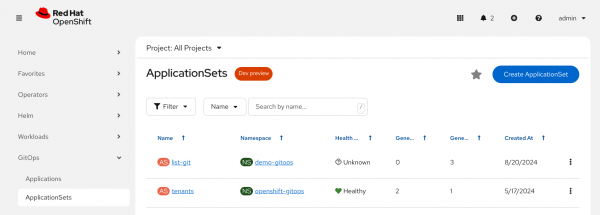GitOps has continued in its popularity and has become the standard way to manage Kubernetes cluster configuration and applications. Red Hat continues to see the widespread adoption of the GitOps methodology across our portfolio as customers look for ways to increase efficiency in their operations and development teams.
Red Hat is pleased to announce that version 1.18 of OpenShift GitOps has been released, bringing with it some exciting new capabilities.
New in version 1.18
Self-Service Namespaces
Users can now self-service managing Namespaces by an Argo CD instance. Previously to add a Namespace to Argo CD a cluster administrator was required to add the argocd.argoproj.io/managed-by: <argocd-namespace> label to the namespace. Adding this label triggers the operator to add the Namespace to the list of Namespaces managed by that Argo CD as well as creating the necessary Roles/RoleBindings to support managing resources.
Now users can self-service this capability by adding a NamespaceManagement resource in the namespace to indicate the Argo CD instance that is managing it. To prevent users from binding to Argo CD instances arbitrarily administrators specify supported Namespaces in the ArgoCD CR (argocd.spec.namespaceManagement) either as a literal or as a wildcard pattern.
Operator Managed Local Users
In Argo CD local users are often used as a way to integrate automation and other tools with Argo CD, for example Continuous Integration is a common use case for this. Previously users would have to manage the local users themselves by creating them using the argocd.spec.extraConfig field and then creating tokens using the argocd CLI.
In this release users can manage local users directly with the operator by specifying them in argocd.spec.localUsers. The operator will automatically create the local user along with a corresponding token in an associated secret. The operator supports a number of options for token generation enabling users to manage token lifetime with optional automatic renewals.
Additional Default Resource Exclusions
Resource Exclusions enables users to exclude resources that are ephemeral, auto-generated or cause excessive churn due to a large number of continuous changes. In OpenShift GitOps 1.18 new default resource exclusions that mirror what is used in upstream Argo CD, as per here, have been added.
Note: These default exclusions are added automatically to the argocd-cm ConfigMap by the operator only if no resourceExclusions are specified in the Argo CD CR.
Operator Managed Keycloak Removed
Following its deprecation in OpenShift GitOps 1.17, the ability of the operator to directly manage a local instance of Keycloak as an alternative to Dex has been removed. Integration with a user created and managed Keycloak has not been impacted by this change. Users can still integrate Argo CD with their own Keycloak instances using argocd.spec.oidcConfig.
GitOps in the OpenShift Console (Dev Preview)
The OpenShift GitOps Console Plugin now supports showing Applications and ApplicationSets in the OpenShift Console under a new GitOps menu item. This is not intended as a replacement for the Argo CD UI but rather to make it easier to work with GitOps resources when already engaged in the OpenShift Console.


Argo CD 3.1 Available
With this version, Argo CD has been upgraded to 3.1 which brings a number of new features and benefits.
OCI Support
The usage of OCI has become more common and organizations are looking to OCI to host GitOps artifacts. Argo CD previously supported OCI with Helm charts however in 3.1 OCI can now be used as a generic application source for manifests. Documentation for this feature is available here.
Manage Automated Sync
Previously users would enable Automated Sync in Argo CD by adding or removing the Application.spec.syncPolicy.automated field. Temporarily removing and adding back the field was problematic since settings prune, etc would be lost on removal. In this version a new Application.spec.syncPolicy.automated.enabled field was added enabling easy toggling between manual and automated sync options.
View more information about the Argo CD 3.1 release in the following blog with detailed release notes here.
Conclusion
OpenShift GitOps 1.18 is a significant update with many new features, to learn more about this update please review the official documentation and release notes.
